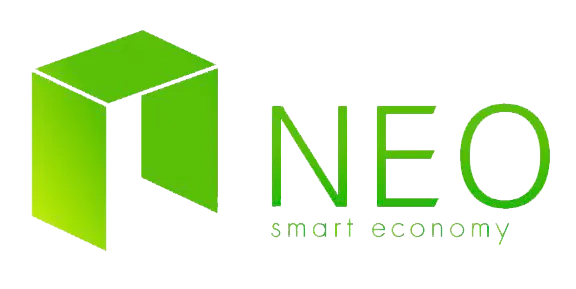Dear Readers,
Anyone following the cryptocurrency market over the past few months has seen the spectacular rise and pretty dramatic fall of the value of an Ether. The currency rose from the $100 range to the $400 range from May to June, and from June to July we’ve seen it drop back down to the $200 range. The question is, why is this happening now?

Here are four reasons for the drop:
1. Post-ICO startups are cashing out to reduce risk
These projects have costs. And, for now, those costs are in fiat currency.
While you can buy some things with Ether and Bitcoin, most of the expenses of running an organization and the expenses of the people who work in those organizations still happen in boring old dollars, euros, and yen.
Let’s assume for the moment that the start-up projects are not scams or pump and dump schemes (I’ll get those a bit later). Still, these projects have to get actual money to pay for stuff and, thanks to the blockchain, we can see it all happening. So when EOS decides to deleverage some of its ETH risks, everyone knows about it.
And when Tezos, which I predicted would raise $250 million (it was just a little bit under that), completes a record-setting crowd sale, it will do what anyone does: reduce risk.
Scale this out to every project and assume for a moment that every ICO is going to take 10-20 percent of its ETH “off the table” and put it in fiat to avoid the “crash that everyone knew was coming, but didn’t know when ” and now you have $50-100 million worth of sell orders coming in at the same time. That’s a decent percentage of the market moving in one direction at once. And that’s just the ICOs from June.
But wait, as they say, there’s more.
2. And they’re cashing out to buy technical talent
Remember why all of these projects are raising money. For the most part, it’s to find talent to help build the vision.
The challenge? Blockchain technical talent is in ridiculously short supply. Combine that with very high demand and you have market forces that my nine-year-old can explain.
There’s a war for development talent, and it’s being fought at the cash register. The fiat cash register.
It is why one article recently proclaimed “Why Brave’s $35 Million ICO May Not Be Enough for a High-Tech Hiring Spree”
3. New investors have come in — with shorter time frames
I’ll throw one other possibility out there. The advent of new types of investors in the space.
Over the past few months, we’ve seen an explosion in the value of the crypto-market. As a result, any money manager worth his/her salt wants to get “in on the action.” Everyone wants to be Olaf.
It’s not surprising that Forbes recently profiled 15 New Hedge Funds that Want In On 84,000% Returns. That’s just the tip of the iceberg.
The more “professional” traders are thrilled with month/month returns that ETH and the others are yielding, so naturally, they are going to take profits as well. They don’t have the HODL (Hold on For Dear Life) perspective that many of the O.G.’s (Original Gangsters) in the space have.
4. “Pump and dump” start-ups could be taking a toll
Among all of the serious blockchain startups conducting ICOs, there are a number of others that are either unprepared for real company-building or that never intended to build a legitimate company in the first place. In these cases, the ETH pumped into an ICO is likely to be cashed out quickly. With the current lack of regulation in the ICO space, it’s too easy for malicious players to abuse the system and for undermotivated or unprepared startups to simply give up and cash out.
Behold The Solution

Benefits:
- Earn Gas (Similar to a Masternode feature)
- Supports Multiple Coding languages
- Government/ Corporate backing
- Support higher traffic (No crashes like ETH)
- Smart Contracts
NEO is an open source cryptocurrency being developed by Onchain, a company based in Shanghai. One of only a few cryptocurrencies that support smart contracts, many refer to NEO as the “Chinese Ethereum” (kinda sounds like an exotic drug). NEO started development in 2014, a year before Ethereum was announced in 2015.
NEO has solid fundamentals. Its technology is significantly better than Ethereum’s and like Ethereum, it enjoys strong corporate and government support. NEO is strikingly absent from Western markets while adoption in China is strong. Although Onchain seems to be reluctant to pursue Western markets at the moment, its upcoming rebranding event will probably change that. As of right now, there is a lack of English marketing materials for NEO.
Along the recent rebranding to NEO, they are taking the opportunity to update the blockchain network. The Antshares network 1.x has limited smart contract functionality, so they will update it to the NEO network 2.0 with a full smart contract system. The whole update process will be done by August 8th as a celebration of their 1-year ICO anniversary.
The following upgrades for NEO network 2.0:
We will first need to upgrade all non-consensus nodes. Exchanges, blockchain explorers, and other services are required to upgrade to NEO 2.0 before August 8th.
Regular users can, but are not required to, update to the new client before August 8th.
On the day of August 8th, we will upgrade all consensus nodes to NEO 2.0.
After all consensus nodes are updated, users who have not updated to the new client will be prompted to do so when starting the old Antshares 1.x client.
It is the same blockchain, so you can copy the "Chain" folder from the old AntSharesCore into the new NEO 2.0 client folder to speed up the blockchain syncing.
If you have your NEO/ANS, NeoGas/ANC in an exchange, then you don't need to do anything.
All your assets are safe and secure during the whole update process.
Other Promosing Platforms: STRAT & EOS & LISK
Thank you.
Follow me for more crypto tips!